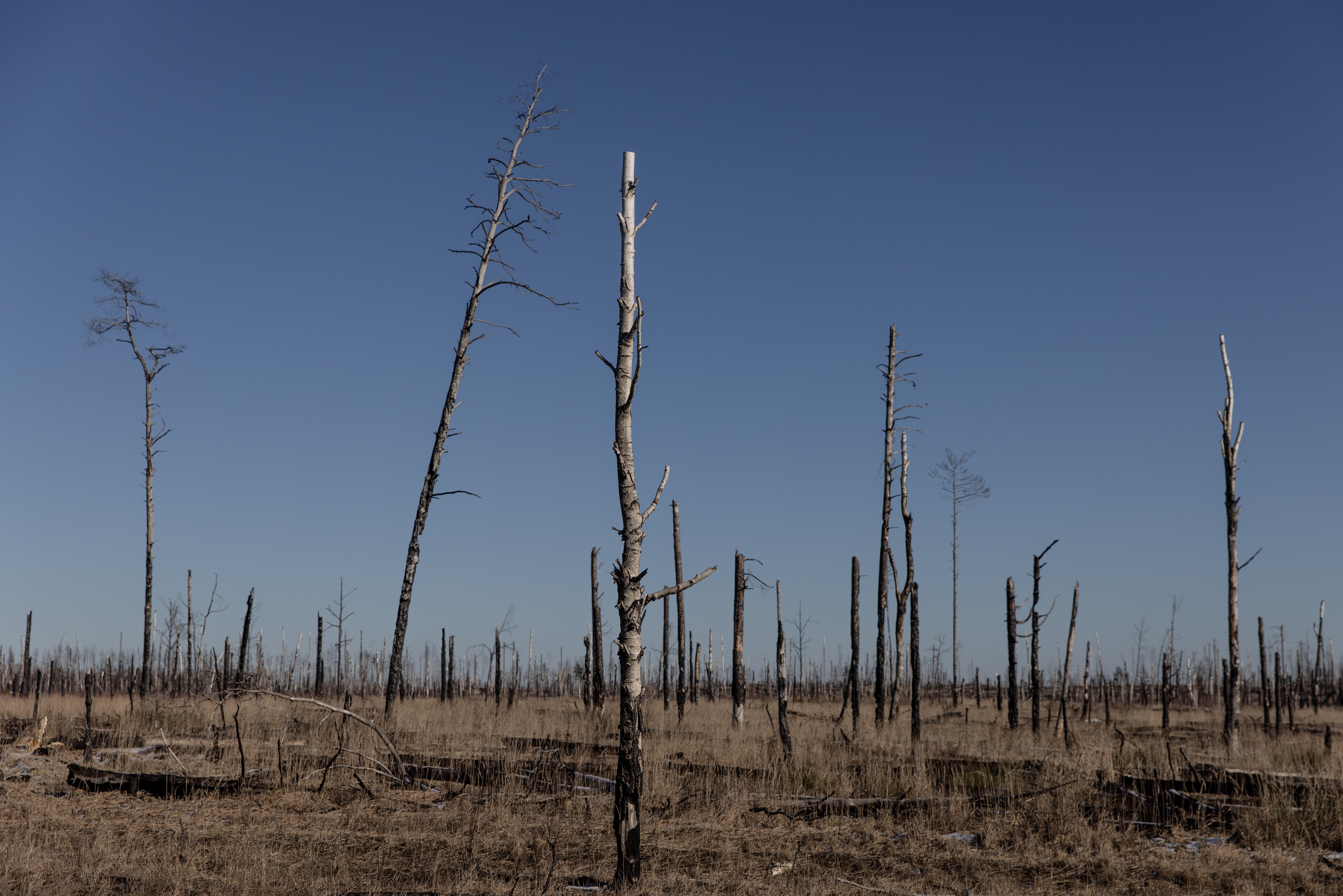
Russian soldiers drove armoured vehicles without radiation protection through Chernobyl’s highly toxic “red forest”, kicking up clouds of radioactive dust, workers at the site have said.
A Chernobyl employee said the act was “suicidal” for the soldiers, who had seized the site of the nuclear disaster, because the radioactive dust they inhaled was likely to cause internal radiation in their bodies.
Radiation levels at Chernobyl had increased due to heavy military vehicles disturbing the soil, Ukraine’s state nuclear inspectorate said on 25 February. But until now, details of exactly what happened had not emerged.
The two Ukrainian workers were on duty when Russian tanks entered Chernobyl on 24 February and took control of the site, where staff are still responsible for the safe storage of spent nuclear fuel and supervising the concrete-encased remains of the reactor that blew up in 1986.
Both said they had seen Russian tanks and other armoured vehicles moving through the red forest, which is the most radioactively contaminated part of the zone around the power station, about 100km north of Kyiv.
The regular soldiers a worker had spoken to when they worked alongside them in the facility had not heard about the explosion, he said.
Russia’s military said radiation was within normal levels after capturing the plant, and their actions prevented possible “nuclear provocations” by Ukrainian nationalists.
Russia has previously denied that its forces have put nuclear facilities inside Ukraine at risk.
Russia’s defence ministry did not respond to the accounts from Chernobyl staff.
The red forest, so called because dozens of square kilometres of pine trees turned red after absorbing radiation from the explosion, is considered so highly contaminated that even the nuclear plant workers are not allowed to go there.
“Nobody goes there ... for God’s sake. There is no one there,” said Valery Seida, acting general director of the Chernobyl plant, who was not there at the time of the Russian invasion.
But the Russian military convoy went through the zone, the two employees said. One of them said it used an abandoned road.
“A big convoy of military vehicles drove along a road right behind our facility, and this road goes past the red forest,” said one of the sources.
“The convoy kicked up a big column of dust. Many radiation safety sensors showed exceeded levels,” he said.
After the Russian troops arrived, the two plant employees worked for almost a month along with colleagues until they were allowed to go home last week when Russian commanders allowed replacements for some staff to be sent in.
Reuters could not independently verify their accounts, which were given by phone on Friday and on condition of anonymity because they feared for their safety.
The next day, Russian forces seized the town Slavutych near Chernobyl, where most plant workers live.
Seida and the mayor of Slavutych said on Monday that Russian forces had now left the town.
Reuters was not able to independently establish the radiation levels for people in the immediate proximity of the Russian convoy that entered the red forest.
On Sunday, Ukraine’s deputy prime minister warned about the risk of radiation at Chernobyl as she criticised Russian forces for “militarising” the exclusion zone.
Iryna Vereshchuk demanded that the UN Security Council take immediate steps to demilitarise the zone and dispatch a special mission to eliminate the risk of an accident at the site of the world’s worst civil nuclear disaster.

The State Agency of Ukraine on Exclusion Zone Management said on 27 February that the last record it had on a sensor near nuclear waste storage facilities – before it lost control over the monitoring system – showed that the absorbed dose of radiation was seven times higher than normal.
The International Atomic Energy Agency (IAEA) said on 25 February that radiation levels at the Chernobyl site reached 9.46 microsieverts per hour but remained “within an operating range” recorded in the exclusion zone from the moment of its creation and posed no threat to the general population.
The safe levels, by IAEA standards listed on the agency’s website, are up to 1 millisievert a year for the general population and 20 millisieverts a year for those who deal with radiation professionally, where 1 millisievert is equal to 1,000 microsieverts.
The IAEA said it stopped receiving monitoring data from the Chernobyl site on 9 March.
The Chernobyl exclusion zone is still considered by Ukrainian authorities to be dangerous. Entering the disaster site without permission is a crime under Ukrainian law.
Additional reporting by Reuters







